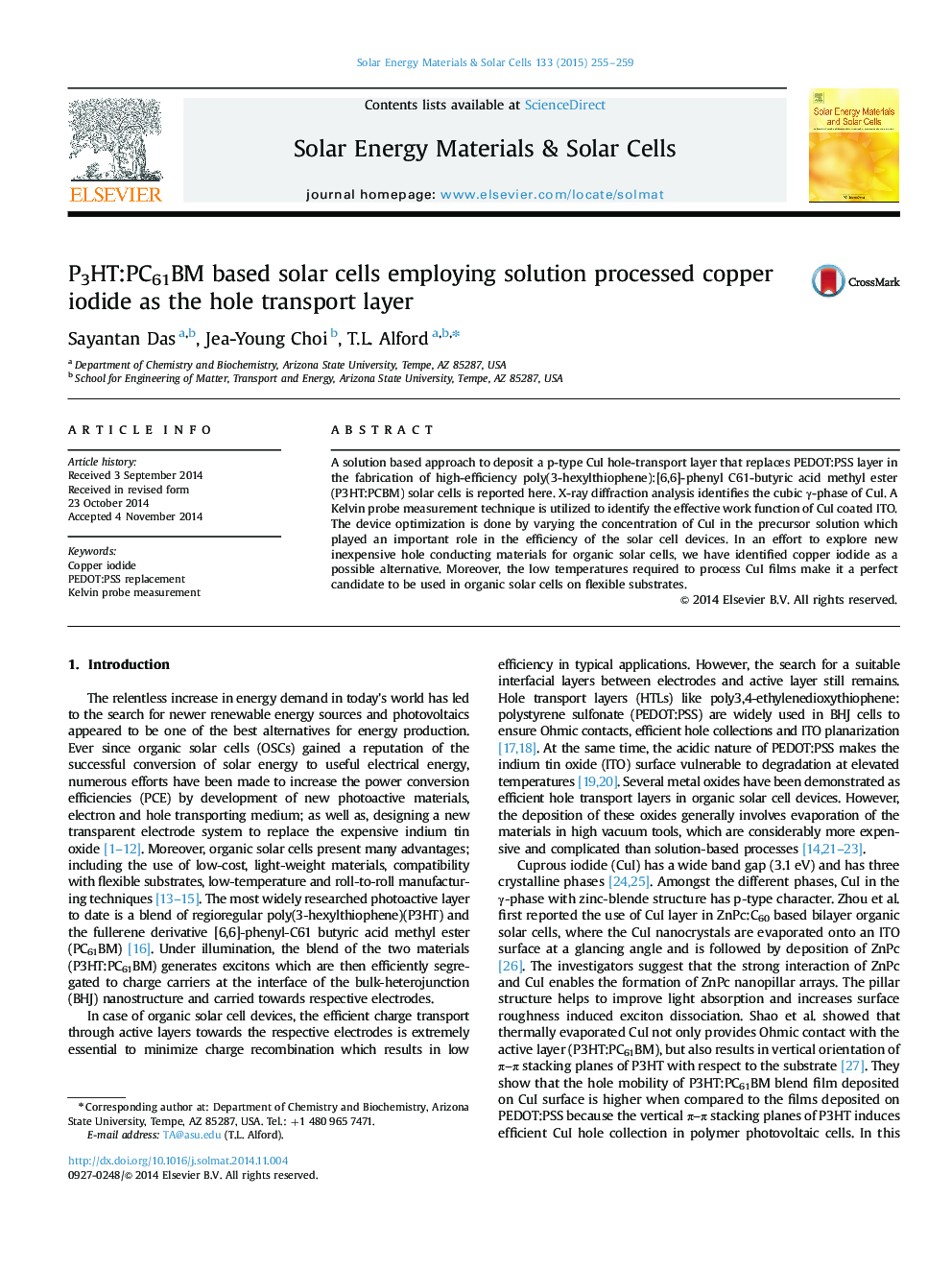| Article ID | Journal | Published Year | Pages | File Type |
|---|---|---|---|---|
| 6535332 | Solar Energy Materials and Solar Cells | 2015 | 5 Pages |
Abstract
A solution based approach to deposit a p-type CuI hole-transport layer that replaces PEDOT:PSS layer in the fabrication of high-efficiency poly(3-hexylthiophene):[6,6]-phenyl C61-butyric acid methyl ester (P3HT:PCBM) solar cells is reported here. X-ray diffraction analysis identifies the cubic γ-phase of CuI. A Kelvin probe measurement technique is utilized to identify the effective work function of CuI coated ITO. The device optimization is done by varying the concentration of CuI in the precursor solution which played an important role in the efficiency of the solar cell devices. In an effort to explore new inexpensive hole conducting materials for organic solar cells, we have identified copper iodide as a possible alternative. Moreover, the low temperatures required to process CuI films make it a perfect candidate to be used in organic solar cells on flexible substrates.
Keywords
Related Topics
Physical Sciences and Engineering
Chemical Engineering
Catalysis
Authors
Sayantan Das, Jea-Young Choi, T.L. Alford,
